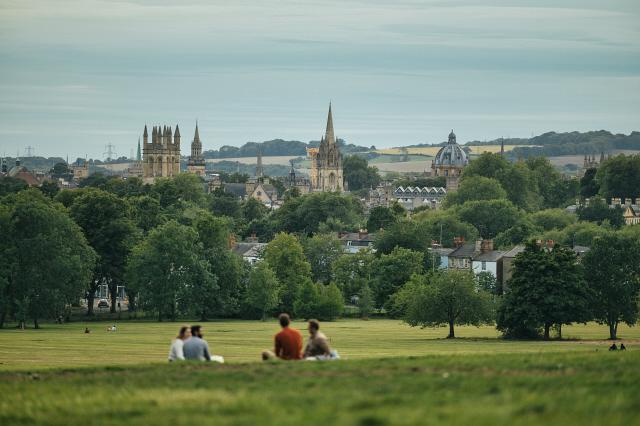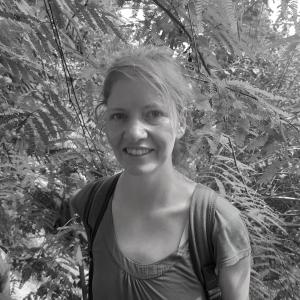More funding needs to be given to areas lacking in green spaces say researchers at the Environmental Change Institute (ECI).
A report by scientists working with the ECI’s Leverhulme Centre for Nature Recovery, identifies neighbourhoods in Oxfordshire experiencing both socio-economic deprivation and poor provision of accessible green spaces, with a view to these neighbourhoods being prioritised in terms of planning, allocation of funding, and effort for improving quality and quantity of accessible green spaces.

A view of Oxford from South Park
Dr Martha Crockatt, ECI Researcher and author of the report, said:
Everyone should be able to freely access green space within a short walk from their home. I hope the report will help focus funding and effort to improve green space quality and quantity in these areas in collaboration with local communities, increasing the benefits from green space for those who need it most.”
There are well known links between health and access to and engagement with green space including parks, playing fields and natural/semi-natural spaces – which is increasingly recognised in environment and health policy. However, more socio-economically deprived communities often have less access to green space, and there is evidence that these communities receive greater health benefits from it.
The report identifies neighbourhoods in Oxfordshire that are relatively deprived according to socio-economic measures and lack access to green space on a number of metrics (including amount of green space, green space crowding and private gardens). These neighbourhoods, predominantly in urban areas, are presented as priorities for green space funding and effort. Although it is often virtually impossible to create new green spaces in densely populated urban environments, existing green spaces can be improved and protected from development, and innovative solutions can be considered, such as greening active travel routes and pocket parks. In approaching such efforts, the report noted the importance of consulting local communities in decision-making, to ensure that local green space works for those using it.
Councillor Nathan Ley, Oxfordshire County Council portfolio holder for Public Health, Inequalities and Community Safety, commented:
This report provides an important starting point for working with communities to improve the quality of their local green spaces, so that people of all ages are able to enjoy both the physical and mental health benefits of connecting with nature.”
The project was developed in collaboration with a number of partners, including the Oxfordshire Local Nature Partnership (OLNP), in support of its work championing the provision of wildlife rich green spaces so that people and nature can thrive together. Recommendations for Oxfordshire green space based on the report were developed with local government officers and NGOs with responsibilities in the subject.
Matt Whitney, Oxfordshire Local Nature Partnership (OLNP) Manager, said: “We hope that this report will help guide the brilliant work of our partners in the conservation, policy making and community engagement sectors, to ensure we prioritise creating and improving green spaces with the communities that need them most. We are pleased to support quality research like this, which helps our partners work effectively to reverse the decline in nature so that people and nature can thrive.”
Dr Crockatt partnered with a number of people on her report including; Alison Smith, Researcher, ECI; Dr Mark Hirons, Senior Researcher, ECI; Dr Connie McDermott, Land, Society & Governance programme lead, ECI; Matt Witney, Oxfordshire Local Nature Partnership; Rosie Rowe, Oxfordshire County Council; Camilla Burrow, Wild Oxfordshire; and Joseph Gent, Research Assistant, Leverhulme Centre for Nature Recovery.
Read the full report: Oxfordshire’s green space deprived neighbourhoods

